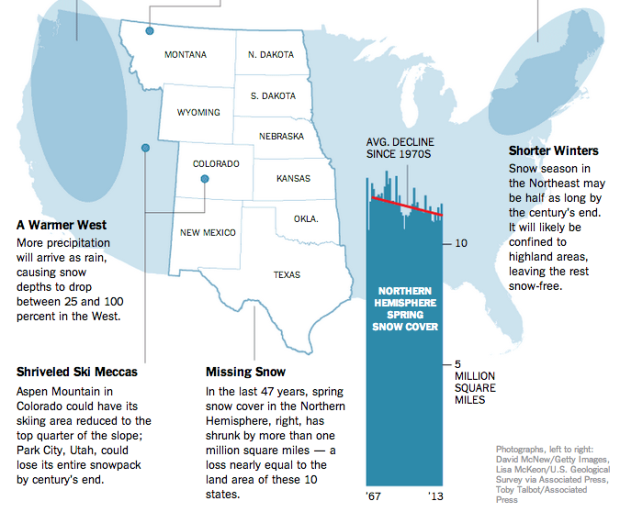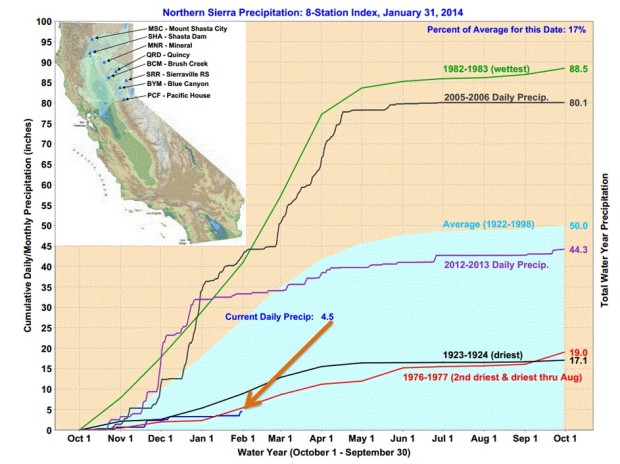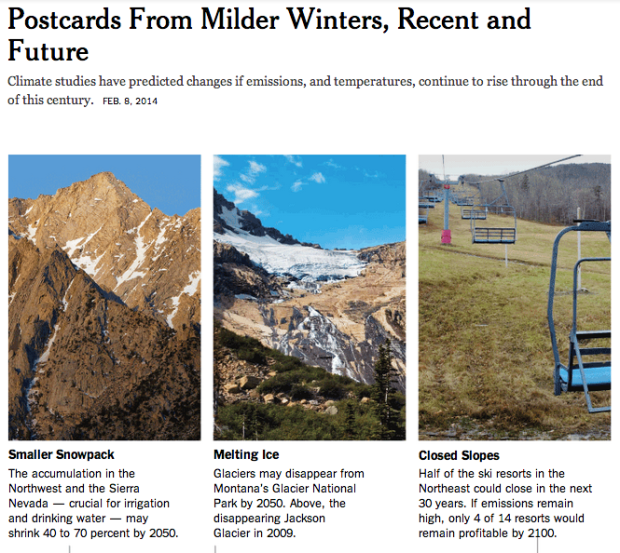
Is snow really on its way out? Will there be no ski resorts left within our children’s lifetimes? How much damage has already been done?
The facts are staggering. If you’re in a hurry, just read the bold sentences in the excerpts below.
Here are two excerpts from Porter Fox’s New York Times article: “The End of Snow?”
The End of Snow?
by Porter Fox/New York Times
The planet has warmed 1.4 degrees Fahrenheit since the 1800s, and as a result, snow is melting. In the last 47 years, a million square miles of spring snow cover has disappeared from the Northern Hemisphere. Europe has lost half of its Alpine glacial ice since the 1850s, and if climate change is not reined in, two-thirds of European ski resorts will be likely to close by 2100.
The same could happen in the United States, where in the Northeast, more than half of the 103 ski resorts may no longer be viable in 30 years because of warmer winters. As far for the Western part of the country, it will lose an estimated 25 to 100 percent of its snowpack by 2100 if greenhouse gas emissions are not curtailed — reducing the snowpack in Park City, Utah, to zero and relegating skiing to the top quarter of Ajax Mountain in Aspen.
The facts are straightforward: The planet is getting hotter. Snow melts above 32 degrees Fahrenheit. The Alps are warming two to three times faster than the worldwide average, possibly because of global circulation patterns. Since 1970, the rate of winter warming per decade in the United States has been triple the rate of the previous 75 years, with the strongest trends in the Northern regions of the country. Nine of the 10 hottest years on record have occurred since 2000, and this winter is already looking to be one of the driest on record — with California at just 12 percent of its average snowpack in January, and the Pacific Northwest at around 50 percent.

***
I was floored by how much snow had already disappeared from the planet, not to mention how much was predicted to melt in my lifetime. The ski season in parts of British Columbia is four to five weeks shorter than it was 50 years ago, and in eastern Canada, the season is predicted to drop to less than two months by midcentury. At Lake Tahoe, spring now arrives two and a half weeks earlier, and some computer models predict that the Pacific Northwest will receive 40 to 70 percent less snow by 2050. If greenhouse gas emissions continue to rise — they grew 41 percent between 1990 and 2008 — then snowfall, winter and skiing will no longer exist as we know them by the end of the century.
The effect on the ski industry has already been significant. Between 1999 and 2010, low snowfall years cost the industry $1 billion and up to 27,000 jobs. Oregon took the biggest hit out West, with 31 percent fewer skier visits during low snow years. Next was Washington at 28 percent, Utah at 14 percent and Colorado at 7.7 percent.
The winter sports industry contributes $66 billion annually to the nation’s economy, and supports more than 960,000 jobs across 38 states, according to the Outdoor Industry Association. A surprisingly large sector of the United States economy appears to be teetering on the brink.

To read the full article please visit:
The End of Snow?
by Porter Fox/New York Times

One thought on ““The End of Snow?” | by The New York Times”